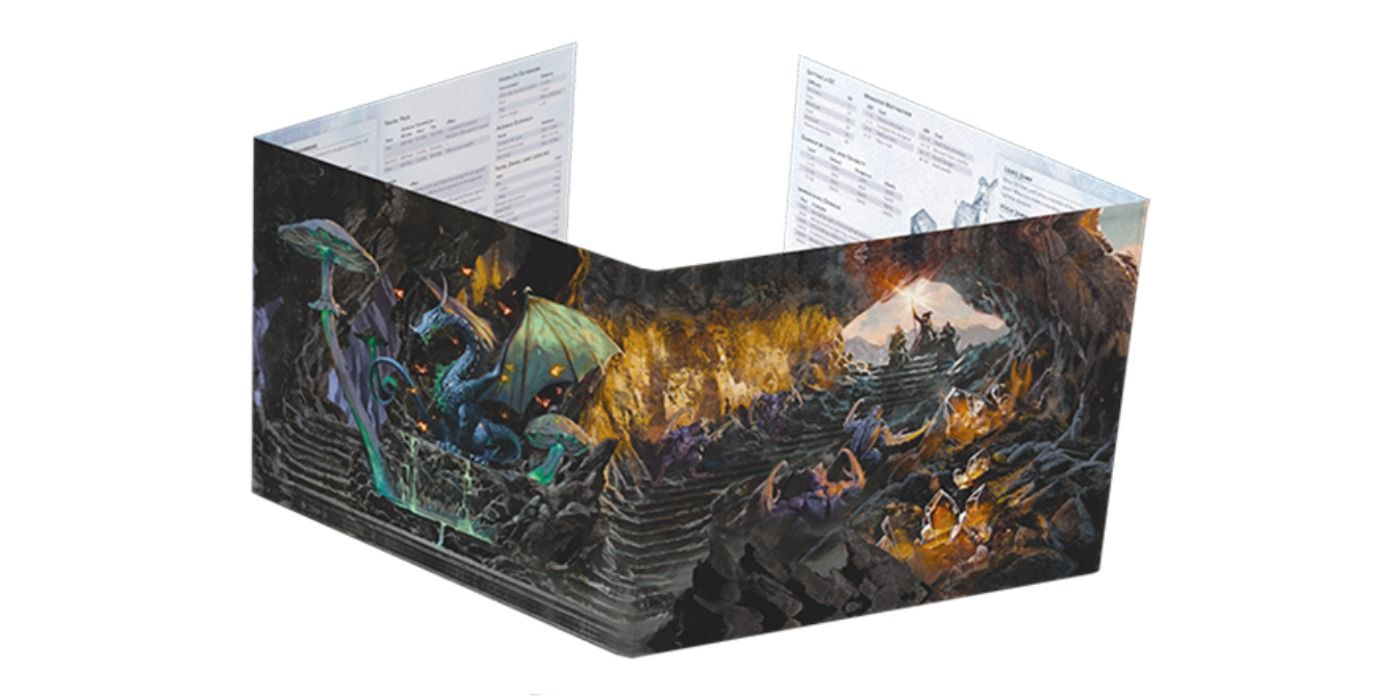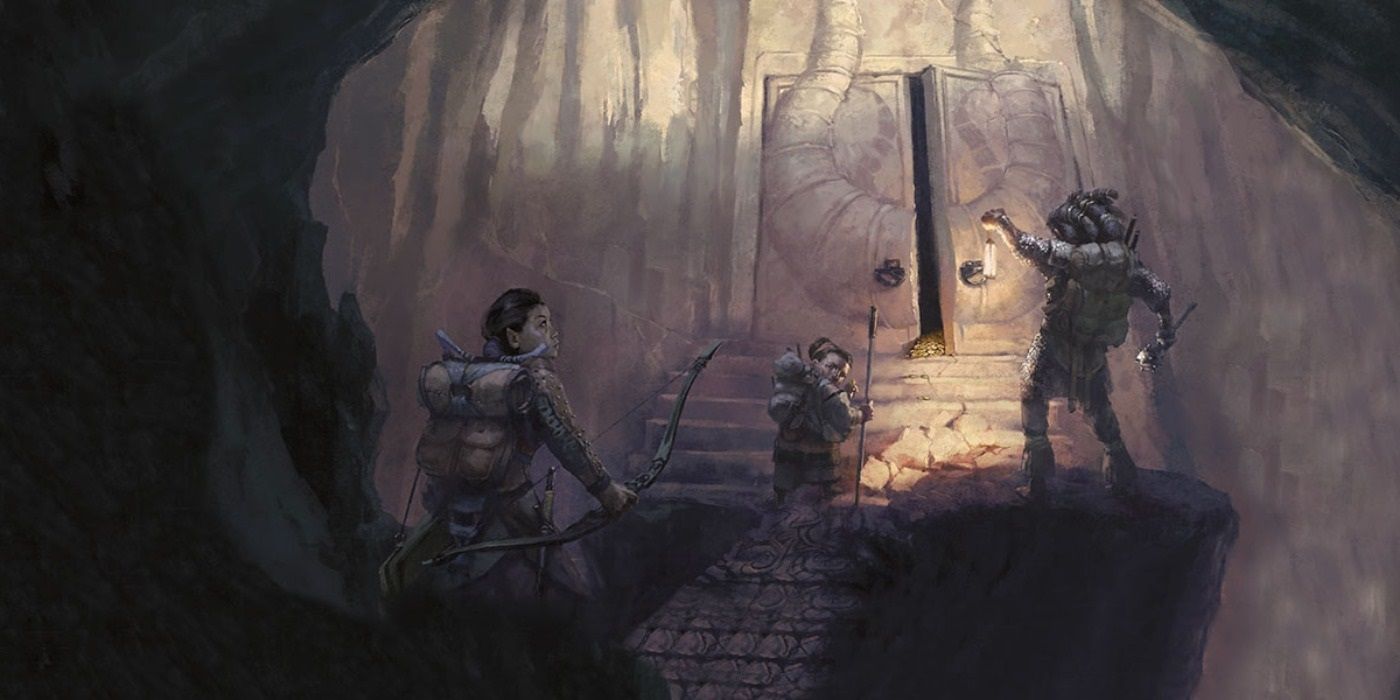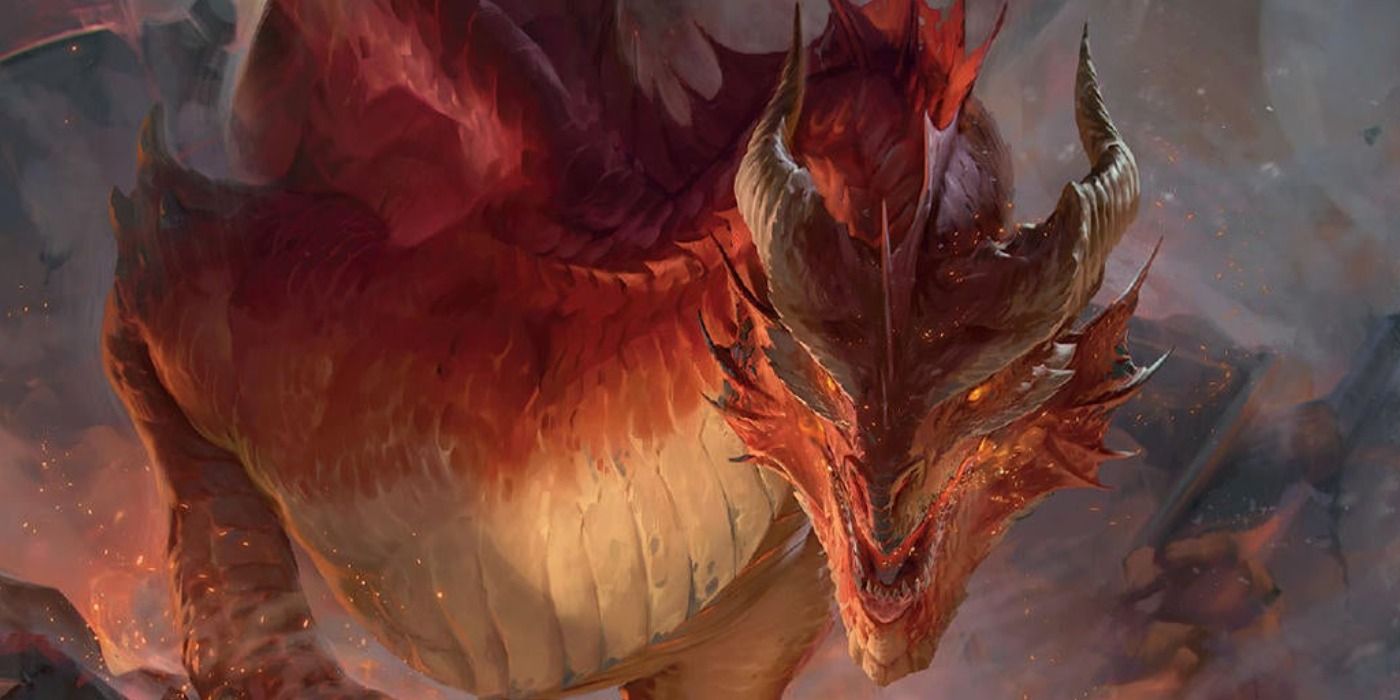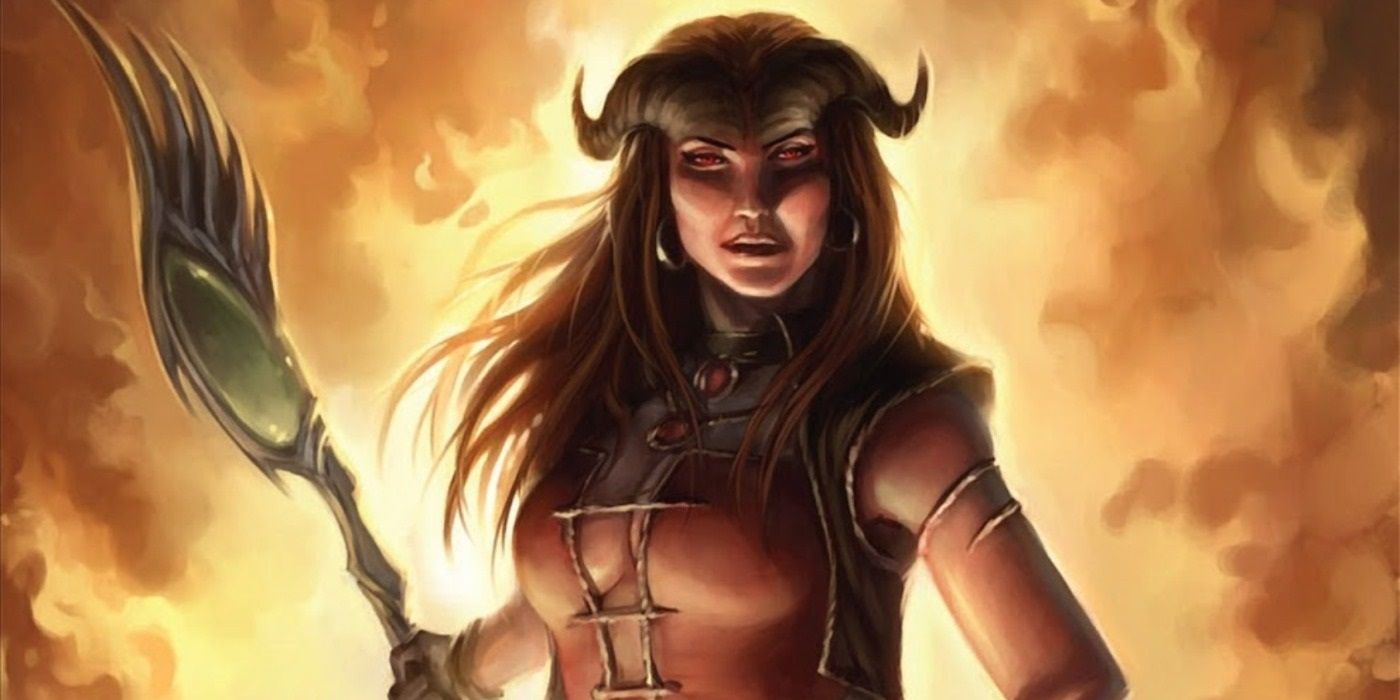A Dungeon Master screen is something used by almost every Dungeons & Dragons group and most are purchased by the DM for use in their games. Wizards of the Coast offers several official DM screens that can be purchased, featuring beautiful artwork and helpful rules notes for the DM to keep track of. There are even D&D products that come with DM screens, such as the D&D Rules Expansion Gift Set. A DM might want to consider creating their own custom DM screen, either due to financial issues, or because they want a specific set of notes printed on the back for use in their game.
The DM screen is a long piece of cardboard that is broken into four segments, allowing it to stand up on its own. The DM keeps it in front of themself on the table, creating a barrier between themselves and the player. The DM screen exists for several reasons, the most important of which is to hide dice rolls. The players generally roll their dice out in the open, while the DM rolls their dice in secret, in order to keep the players guessing. This obstruction also gives the DM the chance to cheat and lie about their dice rolls, in order to save a player character from certain doom or to prevent an action that could derail the campaign. The other use for the DM screen is to hide the DM's D&D adventure notes and maps so that players can't have a peek at them and see what's coming up next in the game.
It's easy for a D&D player to take up the hobby, as all they need is a set of dice, paper, and a pencil. All the group needs is a single copy of the Player's Handbook to contain all of the rules they need for creating characters and running games. The DM of the group doesn't have it quite as easy, as they're expected to have a copy of the Dungeon Master's Guide and the Monster Manual, as well as a copy of any official campaign they're running. They also need a DM screen, but if money is an issue, then they can easily make their own and tailor it to their own needs.
How To Build A DM Screen For D&D
The process of building a DM screen is easy and cheap. It also doesn't take long, so D&D DMs on a tight schedule needn't worry. All the DM needs are four sheets of cardboard and some tape. The thicker the cardboard and the tape, the better, as these will make the DM screen more durable and less likely to be tipped over by activity on the table. Simply line up the four pieces of cardboard horizontally and tape the three points where they connect, making sure to tape on both sides of the cardboard for extra durability.
This is all it takes to build a completely blank DM screen using materials that can be bought in most supermarkets. The homemade DM screen option is cheap, but it's not much to look at, which is why the official ones tend to feature gorgeous artwork for the players to stare at. Then again, there's nothing stopping the DM from putting their own drawings on the DM screen, or printing out images and attaching them with glue or tape.
What Official D&D Rules To Keep Inside The Custom DM Screen
The official DM screens released by Wizards of the Coast contain useful D&D rules the DM might need during a game. Not all of these will be useful for every group, such as the roleplaying notes (like the Monster Motivation chart), but there are some explainers and rules that are likely to come up during a game. The Object Armor Class and Object Hit Points are useful, as breaking things is an all-too-common solution for D&D players who are stuck. The Skills And Associated Abilities chart is useful, as it lists every skill and their associated stat, and the player can even cut down on space by using abbreviations, rather than writing them out in full like in the official Dungeons & Dragons DM screens. The sidebar with rules for Suffocating, Concentration, and Exhaustion is useful, but the rules for jumping can be scrapped, as it's not something that comes up often.
One of the best sections of the official D&D DM screens is the panel dedicated to status conditions. These list the effects of every status effect in D&D, such as Poisoned, Prone, and Stunned. It's always helpful to have this section to hand, considering how many monsters and traps inflict them. The rules for Travel Pace, Cover, Light, Obscured Areas, Tracking DCs, Visibility Outdoors, Audible Distance, Foraging DCs, and the Food Drink and Lodging prices are also useful, while the random Dungeon Encounters and Dungeon Chambers can easily be scrapped unless the DM runs a totally homebrewed D&D game.
What Helpful Notes To Keep Inside The Custom D&D DM Screen
One of the best things to keep behind a DM screen is a list of random character and town names, as well as a selection of random NPC descriptions. There are plenty of random name generators available online that can quickly create a list for the DM to keep. This means the DM will always be prepared if the players ever go off-course or do something unexpected. If a player decides to strike up a conversation with a random NPC, then the DM can have basic information about them prepared.
It's also helpful to have a list of D&D's non-standard combat actions behind the DM screen. A section that describes the functions of the Dodge, Help, Hide, and Use an Object actions is something that could be useful to have on-hand, as well as basic overviews of the Grapple, Shoving a Creature, Stabilizing a Creature, Mounted Combat, and Underwater Combat sections. If there is room left, then a basic graph that shows the AoE of different spell effects can be useful in the heat of battle. If the DM uses random encounters in their game, then a prepped sheet with monsters tied to percentile dice would be helpful, so long as the DM has made sure that the monsters in their Dungeons & Dragons are of a reasonable CR and won't kill the party in moments.




